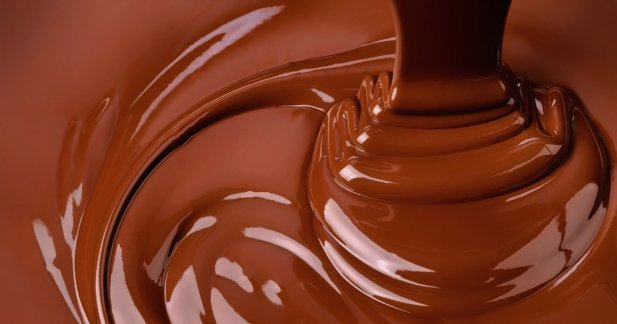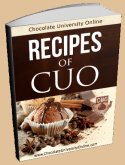
What You Need To Know About Couverture Chocolate
October 10, 2023
Chocolate is one of the world's most beloved treats, cherished for its rich, creamy, and indulgent flavors. While many of us are familiar with common forms of chocolate found in candy bars and baking chips, there's a world of chocolate connoisseurship that extends beyond the grocery store shelf. One such premium chocolate product is couverture chocolate.
If you're a chocolate enthusiast or a budding pastry chef, you've likely heard this term before. But what exactly is couverture chocolate, and why is it prized by professional chocolatiers and bakers alike?
What is Couverture Chocolate?
Couverture chocolate is a high-quality chocolate that is specially formulated for use in professional baking and chocolate-making applications.
The word "couverture" comes from the French word "couvrir," which means "to cover," and that's precisely what this chocolate is designed to do – cover or coat various confections, pastries, and desserts.
Unlike regular chocolate bars, couverture chocolate contains a higher percentage of cocoa butter, which gives it distinct properties that make it ideal for certain culinary endeavors.
Uses of Couverture Chocolate
Now that we understand its unique characteristics, here's how you can use it at home...
- Chocolate Ganache: Couverture chocolate is the preferred choice for making velvety and luscious chocolate ganache. Whether used as a filling for truffles or as a cake frosting, its high cocoa butter content ensures a smooth and luxurious texture.
- Chocolate Coatings: Professional chocolatiers use couverture chocolate to coat truffles, pralines, and other confections. Its glossy finish and excellent snap create an enticing outer shell for various treats.
- Molding Chocolates: When you want to create intricate chocolate molds, the ability to melt evenly and set without streaks or blemishes is crucial.
- Chocolate Decorations: Pastry chefs often use couverture chocolate to craft delicate decorations for desserts, such as chocolate curls, shavings, and tempered chocolate sheets.
- Dipping Fruits and Confections: Whether you're dipping strawberries, pretzels, or marshmallows, couverture chocolate is the choice for achieving a perfect, glossy coating.
- Baking: Professional bakers favor couverture chocolate for recipes that require high-quality chocolate, like chocolate croissants, brownies, and lava cakes.
Tempering
Tempering is a critical step when working with couverture chocolate to ensure it sets properly with a glossy finish.
It involves melting the chocolate to a specific temperature, then cooling and reheating it. This process stabilizes the cocoa butter crystals within the chocolate, preventing it from becoming dull and grainy as it cools.
Couverture and Regular Chocolate
Couverture chocolate and regular chocolate are distinct types of chocolate with notable differences in composition, quality, and usage. Here's a comparative overview of these two chocolate varieties:
-
Cocoa Butter Content
- Couverture: Couverture chocolate contains a higher percentage of cocoa butter, typically ranging from 32% to 39%. This extra cocoa butter gives it a smoother texture and a glossy finish when tempered.
- Regular: Regular chocolate, like that found in candy bars, has a lower cocoa butter content. It often hovers around 15-20%.
- Particle Size
- Couverture: It undergoes a refining process that results in smaller cocoa particle sizes. This contributes to its smooth and even melt-in-your-mouth quality.
- Regular: Regular chocolate may have larger cocoa particles, which can make it less smooth when melting and eating.
- Glossy Finish
- Couverture: Due to its high cocoa butter content, couverture chocolate can achieve a beautiful glossy appearance when tempered, making it ideal for decorative purposes.
- Regular: Regular chocolate may not develop the same glossy finish, especially when used for coatings or decorations.
- Flavor Profile
- Couverture: The elevated cocoa butter content enhances the chocolate's flavor, offering a richer and more complex taste with deep cocoa notes.
- Regular: While still delicious, regular chocolate might have a simpler flavor profile with a higher emphasis on sugar and milk content.
- Usage
- Couverture: It is primarily used by professional chocolatiers and bakers for high-end creations such as truffles, ganache, coatings, and decorative elements. Its premium quality and glossy finish make it perfect for these applications.
- Regular: Regular chocolate is commonly used for everyday snacks, baking in home recipes, and as a main ingredient in commercial candy bars.
- Tempering
- Couverture: Tempering is crucial when working with couverture chocolate to achieve the desired glossy and smooth texture. It requires precise temperature control during melting and cooling.
- Regular: While tempering can be done with regular chocolate, it is less critical for most casual baking applications.
- Cost
- Couverture: Due to its high-quality ingredients and manufacturing process, couverture chocolate is generally more expensive than regular chocolate.
- Regular: Regular chocolate is readily available and more affordable, making it suitable for everyday consumption and basic baking.
Where Art Meets Sweetness
Couverture chocolate is the go-to choice for professionals in the world of chocolate and pastry arts due to its exceptional quality and versatility. Its high cocoa butter content, glossy appearance, and superior flavor make it an essential ingredient in crafting exquisite desserts and confections.
Regular chocolate, on the other hand, is a more common and versatile option for everyday use and is often enjoyed as a simple treat. The choice between these chocolates depends on the specific culinary goals and the desired outcome of your chocolate creations.
Whether you're an aspiring chocolatier or simply a chocolate lover looking to elevate your creations, couverture chocolate is the key to achieving that perfect melt-in-your-mouth experience and stunning visual appeal.
So, the next time you're indulging in a beautifully coated chocolate truffle or admiring a flawlessly decorated cake, you'll have a newfound appreciation for its artistry.
Want to see some options from Amazon? Click here.
Check out these unique chocolate recipes!
Guiltless Chocolate Brownies: Chewy and fudgy, brownies are a favorite for many. Here's a guiltless version of delicious chocolate brownies. You needn't worry about whittling your middle while devouring these tasty treats!
Chocolate Chip Meringue Cookies: Soft or crunchy, chocolate chip cookies are always a hit. Combined with some egg whites would always make a meringue cookie worth drooling over.
Rum Chocolate Cake: A moist and fluffy chocolate cake is a timeless classic. The scrumptiousness of chocolate along with the flavor and kick of rum will make any celebration extra special.
Have you tried couverture chocolate? Share your thoughts in the comment section below and don’t forget to follow our Facebook and Twitter accounts for more fun and interesting chocolatey ideas!
 Get "Recipes Of CUO" - FREE!
Get "Recipes Of CUO" - FREE!
You'll get 52 chocolate recipes you can make to impress your friends (and a bonus recipe that you put on your face instead of in your mouth). The Recipes Of CUO ebook represents some of the favorite recipes we have published over the years.
CLICK HERE to get a FREE copy!
- The Sweet Origins: Who Really Invented Chocolate? - April 23, 2024
- Homemade Guilt-Free Chocolate Ice Cream Recipe - April 16, 2024
- Plant-Based vs Vegan Chocolates - April 9, 2024

